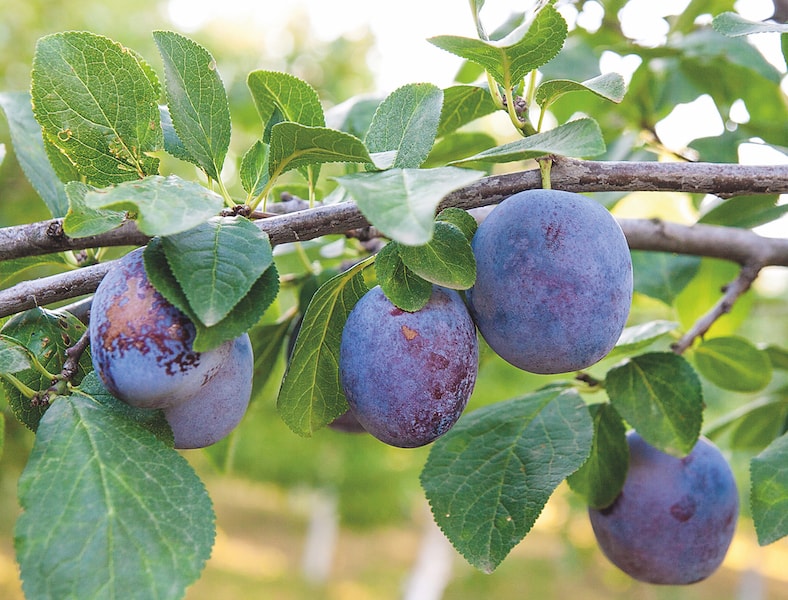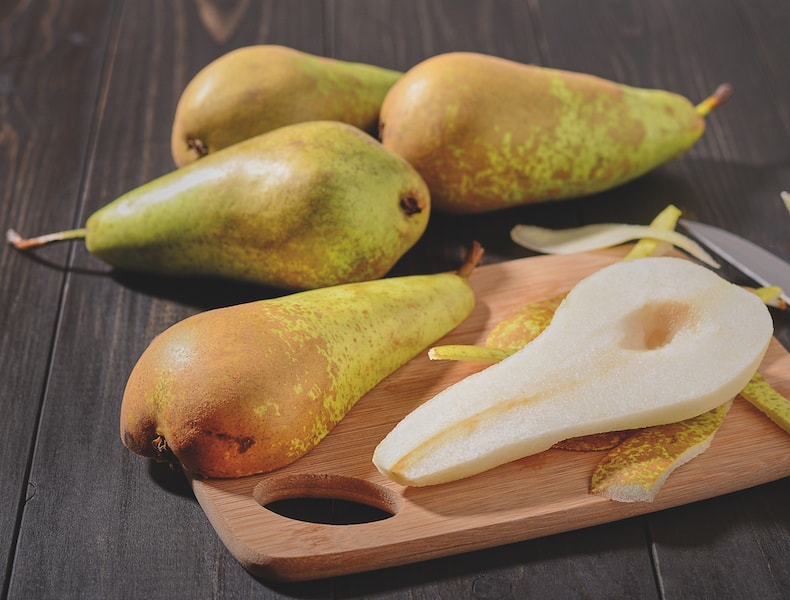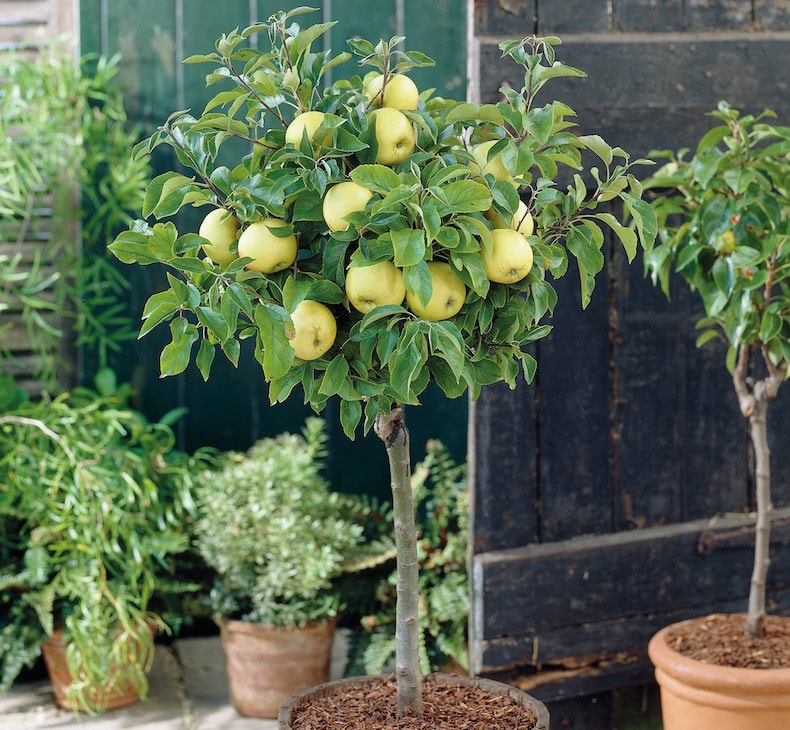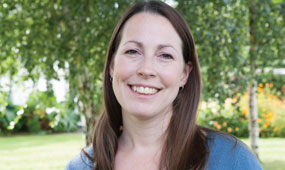Fruit Rootstock Guide

Dwarf fruit tree varieties can grow happily in patio containers
Image: Plum 'Black Amber' (Mini Fruit Tree) from Thompson & Morgan
Most fruit trees are grafted to a particular rootstock which determines both how big it can grow and how vigorous its habit will be. Some rootstocks enable a tree to reach its full height, while grafting to a dwarfing or semi-dwarfing rootstock means you can grow your own mini fruit tree on even the smallest plot. Here we take a look at fruit rootstocks - our guide to help you make the best choice for your garden.
What is a fruit rootstock?

Dwarf pear trees like 'Mini Conference' reach a mature height of about 2.5m
Image: Pear 'Mini Conference' from Thompson & Morgan
A fruit tree rootstock is the stump of a related species which already has an established, healthy root system. A separate fruit tree is then joined to it by grafting or budding. The resulting fruit tree will be stronger, quicker to establish, and will take on the desirable characteristics of whichever rootstock it’s growing on.
The join between the fruit rootstock and the main fruit tree - also called the scion - is easy to identify. It appears as a bulge or kink just a few inches from the bottom of the stem where the wood has knitted together.
Why use grafted fruit trees?

Grafted trees like apple 'Golden Delicious' (Mini Fruit Tree) are perfect for patio containers
Image: Visions BV, Netherlands
If allowed to grow naturally, most fruit trees will easily reach heights of at least 4.5m (15ft). As well as being far too large for most people's gardens, such tall trees would be difficult to harvest. To overcome this problem, most fruit trees are grafted to the roots of a related species with a more compact habit. They might also be grafted to a rootstock that provides a desirable characteristic like vigour or disease resistance.
Grafting a fruit tree to a dwarf rootstock reduces the ultimate size of the tree to such an extent that, as well as, thriving on a small plot, they can even be grown in large (60cm/2ft diameter) containers on your patio. In fact, growing trees in containers is another way to restrict growth. Most miniature fruit trees will reach an approximate height of just 1m, but will grow bigger if you opt to grow them in the ground.
It’s worth remembering that the rootstock you use has no influence upon the size of the fruit itself, so a dwarf patio fruit tree will produce the same-sized fruits as a large orchard-sized tree.

Rootstock varieties
When buying fruit trees online you’ll usually see a rootstock described by a name or code such as ‘M27’, for example. To decode these labels, take a look at our table below which describes all the main rootstocks. Just choose the one that best suits your garden and growing method.
| Fruit Rootstock | Rootstock name | Rootstock type | Ultimate Height |
|---|---|---|---|
| Apple | M27 (Similar to: P9) | Extreme dwarf | 1.2m (48") |
| M9 (Similar to: Pajam 2, Pajam 9, P2) | Dwarfing | 1.8-2.4m (6-8ft) | |
| M26 | Dwarfing | 2.4-3m (8-10ft) | |
| M6 | Semi Dwarfing | 3m (10ft) | |
| M106 | Semi Dwarfing | 3-4m (10-13ft) | |
| Cherry | Gisella 5 | Semi Dwarfing | 2.4-3m (8-10ft) |
| Gisella 6 | Semi Vigorous | 3-4m (10-13ft) | |
| Colt | Semi Vigorous | 5m (16ft) | |
| Peach, Plum, Apricot and Nectarine | St. Julien | Semi Vigorous | 4.5 (14ft) |
| VVA1 | Semi Dwarfing | 2.5m (8ft) | |
| Torrinel 24 | Semi Dwarfing | 2.4-3m (6-10ft) | |
| Myrobalan | Semi Vigorous | 5m (16ft) | |
| Ferlenain | Semi Dwarfing | 3m (10ft) | |
| Mont Clare | Semi Dwarfing | 3m (10ft) | |
| Pear | Quince A | Semi vigorous | 3-4m (10-13ft) |
| Quince C | Semi Dwarfing | 2.4-3m (8-10ft) | |
| Quince Adams | Semi Dwarfing | 2.4-3m (8-10ft) | |
| Citrus | PS | Dwarfing | 2.4-3m (8-10ft) |
| Walnut | Juglans regia | Vigorous | Over 6m (over 20ft) |
Find more advice on growing and selecting the right fruit tree rootstock for your garden at our hub page.

Written by: Sue Sanderson
Plants and gardens have always been a big part of my life. I can remember helping my Dad to prick out seedlings, even before I could see over the top of the potting bench. As an adult, I trained at Writtle College where I received my degree, BSc. (Hons) Horticulture. After working in a specialist plantsman's nursery, and later, as a consulting arboriculturalist, I joined Thompson & Morgan in 2008. Initially looking after the grounds and coordinating the plant trials, I now support the web team offering horticultural advice online.Sign Up For Exclusive Special Offers




© 2024 Thompson & Morgan. All rights reserved. A division of Branded Garden Products Limited.
Sign up for exclusive offers!



